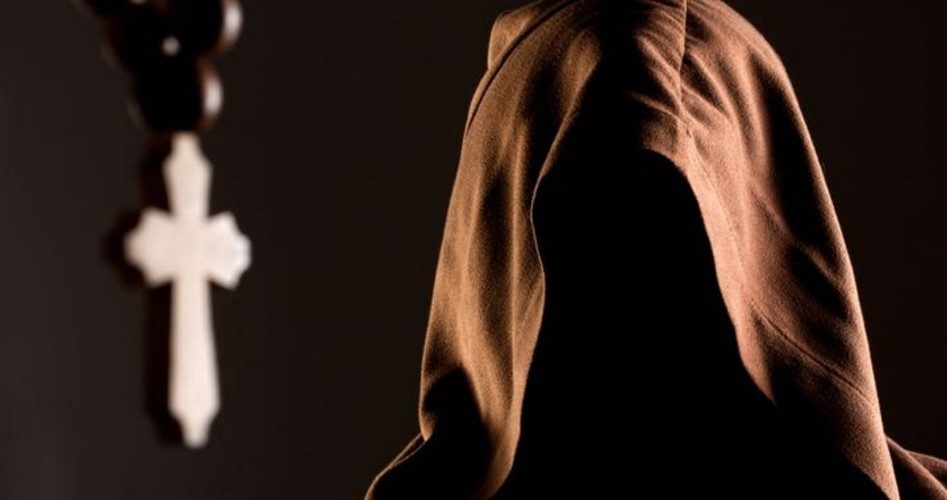
As controversy and anger mount over the latest reports of Catholic Church clerical abuse and coverup, fingers of blame are pointing everywhere. Some say sexual abuse, child pornography, sadomasochism, etc. among clergymen have been an open secret for years and that church leaders, including the pope, have known — yet done nothing. The Pennsylvania grand jury report released in August supports that view; it is filled with damning documents obtained from church archives. Others are quick to defend the pope, citing his 2014 institution of the Pontifical Commission for the Protection of Minors as proof of his sincerity in tackling the problem of sexual abuse in the priesthood.
Now that former high-ranking church official Archbishop Carlo Vigano has turned whistleblower on the Vatican’s knowledge of Cardinal Theodore McCarrick’s sodomitical career — allegations that Pope Francis has so far refused to answer — liberal defenders are rushing to the pope’s aid. Consider the New York Times for example: “Francis Takes High Road As Conservatives Pounce, Taking Criticisms Public” reads an August 28 headline in the print edition. Author Jason Horowitz paints a picture of Pope Francis under attack by “Catholic traditionalists” who are supposedly “infuriated” by the pontiff’s efforts to “nurture a more welcoming church and shift it away from culture war issues, whether abortion or homosexuality.” Horowitz reminds readers: “‘Who am I to judge?’ the pope famously said, when asked about gay priests.”
That quote naturally begs the question: Is sodomy at the root of the sexual abuse epidemic? The United States Conference of Catholic Bishops says it is not. USCCB hired researchers at New York’s John Jay College of Criminal Justice twice to study the problem in the wake of scandals that erupted in 2002 when the Boston Globe shocked the world with revelations about systemic perversion in the Archdiocese of Boston. Two reports emerged: in 2004, The Nature and Scope of Sexual Abuse of Minors by Catholic Priests and Deacons, 1950-2002; and then The Causes and Context of Sexual Abuse of Minors by Catholic Priests in the United States, 1950-2010, published in 2011.
William A. Donohue, president of the Catholic League for Religious and Civil Rights and considered a foremost authority on clerical sexual abuse, published a Critical Analysis of the 2011 study in which he wrote that “what seriously mars the report is its ideological reluctance to deal forthrightly with the role of homosexuality.” Shocked at the report’s conclusion that “sexually active homosexual priests were not more likely to abuse minors,” he says its clinical data stand in stark opposition to that finding. Eighty-one percent of the victims researched were male, mostly post-pubescent, and the report stated, “The majority of priests who were given residential treatment following an allegation of sexual abuse of a minor also reported sexual behavior with adult partners,” most of whom were male as well.
How does Donohue explain the perplexing conclusion? “We live in a time when the rights of homosexuals are ascendant, and talk of a negative nature is not only greeted with suspicion, it is silenced. This is especially true in higher education.” In other words, taking on the homosexual lobby is professional suicide. Donohue laments, “This is unfortunate because unless we come to grips with this issue, our understanding of how this problem emerged will never progress.”
Yet the John Jay data should have surprised no one. In 1982, 20 years before the Boston Globe dropped its bombshell, Father Enrique Rueda, then a priest in the diocese of Rochester, New York, published a book entitled The Homosexual Network: Private Lives and Public Policy. Using information published by homosexual organizations in the United States, Father Rueda uncovered a systematic, well-planned and well-funded infiltration of sodomites into church leadership throughout the country — in many denominations, including the Catholic Church — which began in 1924.
Michael Rose supported Rueda’s findings with further documentation in his 2002 book, Goodbye, Good Men. Rose tells the story of Catholic seminarians with more traditional and conservative values being passed over and stifled in religious formation to make way for liberals and progressives. He postulates that the current shortage of priests in the church is a result of this aggressive agenda promoted in seminaries. In his review of Rose’s work, Jim Hitchcock, professor of history at Saint Louis University, wrote: “Anyone who wishes to understand the pedophilia scandals and how they could have occurred must read this book.”
In an address delivered in August, Father Robert Altier recounted dealings with the homosexual network in his own career.
Understand: there is an intentional and malicious infiltration of the Church for the purpose of destroying Her from within…. When I was in the seminary, if you were not homosexual or radical feminist, you were in big trouble. One of the professors actually was arrogant enough to stand up in front of the class and say, “Martin Luther had the right idea, but he did it the wrong way. He left the Church. You can’t change the Church from the outside. You can only change it from the inside, so we’re not leaving.” So these are people with an agenda.
Altier noted that William Z. Foster, who ran for president of the United States on the Communist Party USA ticket in 1924, 1928, and 1932, wrote a book called Toward Soviet America. In it he blamed the morality, patriotism, and family values of Americans for stymying communist efforts in the United States, and he boldly called for a counter-attack using homosexuality and radical feminism. “They have been extraordinarily successful,” lamented Altier. He quoted Bella Dodd, former-communist-turned-Catholic, who testified before Congress in 1953 about her work in the United States for the Soviet Kremlin, in which she helped inflitrate Catholic seminaries, chanceries, and episcopates with young men hand-picked by communist agents. “We were successful beyond our wildest imagination,” she said, claiming to be personally responsible for more than 1,200 Catholic seminarians, priests, and bishops, and also stating that four cardinals in the Vatican in 1953 were among their specially chosen elite.
What is the solution? The Catholic bishop of Madison, Wisconsin, Robert Morlino, in his Open Letter responding to the Pennsylvania grand jury report, offers one suggestion:
It is time to admit that there is a homosexual subculture within the hierarchy of the Catholic Church that is wreaking great devastation in the vineyard of the Lord. The Church’s teaching is clear that the homosexual inclination is not in itself sinful, but it is intrinsically disordered in a way that renders any man stably afflicted by it unfit to be a priest. And the decision to act upon this disordered inclination is a sin so grave that it cries out to heaven for vengeance, especially when it involves preying upon the young or the vulnerable. Such wickedness should be hated with a perfect hatred. Christian charity itself demands that we should hate wickedness just as we love goodness. But while hating the sin, we must never hate the sinner, who is called to conversion, penance, and renewed communion with Christ and His Church, through His inexhaustible mercy.
Photo: Clipart.com


